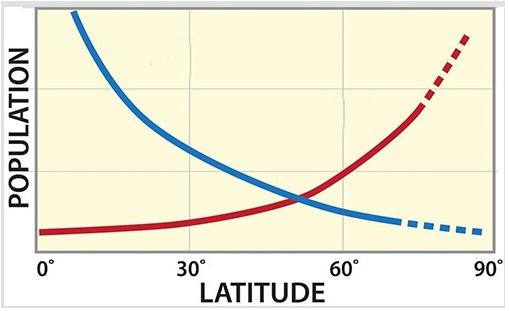Why is deep-ocean circulation referred to as thermohaline circulation?
What will be an ideal response?
Deep-ocean circulation is driven by density differences in the water column, where denser water sinks to the bottom. The density differences are due to temperature and salinity; temperature is referenced by "thermo" and salinity by "haline"—hence thermohaline circulation.
You might also like to view...
In the diagram below, the red line represents

A) K-selected species.
B) omnivores.
C) herbivores.
D) r-selected species.
A station at an altitude of 900 metres above sea level measures an air pressure of 930 hPa. Under normal conditions, which of the following values give the most realistic sea-level pressure for this station?
A. 840 hPa B. 930 hPa C. 1020 hPa D. 1830 hPa
The settling of the soil as water is removed from aquifers causes __________, which causes the surface to lower.
Although transportation costs rise because of intermittent break-of-bulk points, we can surmise that over very long distances the lowest-cost form of transporting goods is by
A) truck. B) train. C) ship. D) airplane. E) rocket.